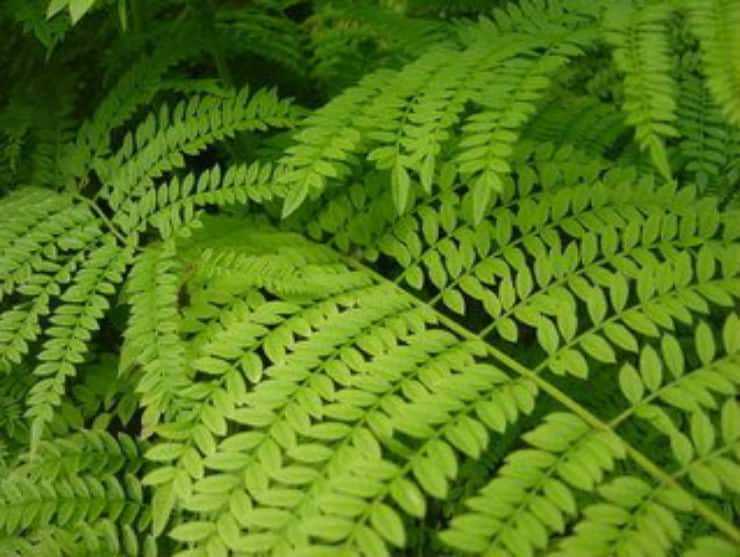Lush, vibrant green ferns famously adorn large porches in hanging baskets, line the edges of garden landscapes, and grow wild in shaded woodland forests. Ferns are a botanical staple. With the right care they can thrive throughout all the seasons in the U.S. Let’s take a look at the most popular varieties and how to best to nurture their growth.
Maidenhair Fern
Also called the walking fern, this fern is a common indoor plant with delicate leaves. The Maidenhair is not a low-maintenance, hardy variety. Direct sunlight will scorch the fern, but it does need indirect sunlight filtered through a window.
The Maidenhair does best in 70-degree temperatures but can withstand cooler temps as long as it does not drop below 60 degrees. They cannot thrive in a dry environment, so keep the Maidenhair near a humidifier and provide regular misting. Try moving it in the bathroom occasionally to get a good mist from the shower and soak in some humidity.
Try to avoid clay pots because they can dry out the soil quickly. Keep the soil moist and fertilize once a month with half-strength liquid fertilizer.
Boston Fern
The Boston Fern is also called the Sword Fern. It is indigenous to tropical climates. Boston Ferns also need humidity and indirect sunlight. Keep them in plastic containers indoors and mist them regularly to keep the soil moist. Dry soil will cause the Boston Fern to die.
An environment that is not humid enough will cause the yellowing of the fern’s leaves. Boston Ferns are often planted in potting soil high in peat moss. Since this absorbs moisture quickly, try soaking the pot once a month in water to ensure that the fern’s soil stays fully hydrated.

Holly Fern
The Holly Fern earned its name from its serrated leaves that resemble a holly’s. Its lush, green foliage is a hardy variety, surviving cold winters and warm summers.
It grows best in zones 6-10. They are popularly used along the borders of a garden and thrive in well-drained, highly acidic soil. Like most ferns, the Holly Fern requires that most of its time be spent in well-shaded areas.
Holly Ferns can also be grown indoors as a houseplant since it does not require direct sunlight. Make sure that the Holly Fern stays in well-drained potting soil with a drainage hole in the pot. Give the fern about one inch of water a week or a thorough soaking whenever the soil feels dry.
Christmas Fern
The Christmas Fern is a hardy evergreen fern that can thrive in zones 3-9. It earned its name from its evergreen foliage that can grow up to three feet long. Adding it to the garden can keep some green in the landscape while other plants are dormant in the fall and winter. Although they can tolerate some direct sun, they thrive in partly or fully shaded areas.
Plant Christmas Ferns in the spring after the threat of frost has passed. Place them at least 18 inches apart and consider adding pine needles or leaf mulch around them to help retain the moisture they desperately need.
To grow a Christmas Fern indoors, make sure it gets indirect sunlight by placing it near a window that will give it sunlight for a few hours each day, but then receive some shade, as well. Keep the soil moist and mist it once a week to help provide the humidity the fern needs.
Be sure to remove brown or dead-looking leaves as soon as they appear and fertilize the fern occasionally.
Cinnamon Fern
Cinnamon Ferns are named for their cinnamon-colored fronds which grow at their center and create an attractive contrast to the fern’s vibrant green foliage.
These ferns require plenty of water. They are indigenous to warm, coastal regions and swampland from Florida to Newfoundland. They can adapt to mild climates as long as they get plenty of moisture.
Plant them outside in the spring at least two feet apart. Their vibrant colors make lovely accents against bright flowers or as a finishing touch under trees. They do not require much direct sunlight, so placing them under a tree or in a shaded area of the garden while ensuring they get plenty of water is the best way to help the cinnamon fern thrive.
Conclusion
Ferns are lovely, lush additions to any home or garden. Remember, most ferns require filtered sunlight, plenty of shade, and plenty of moisture. With the right care, they will thrive indoors or outdoors with their impressive foliage year-round.

